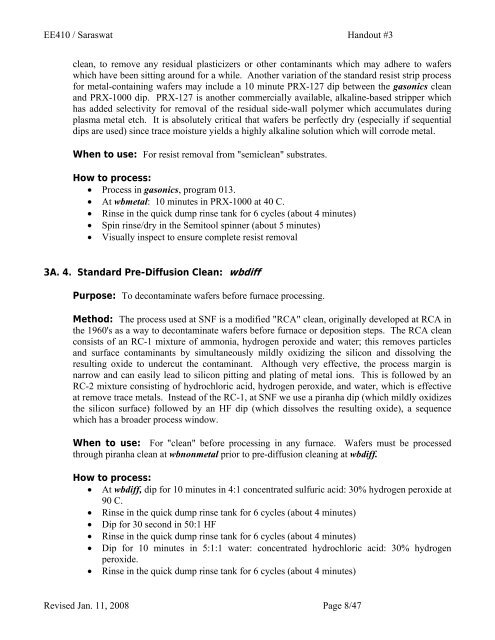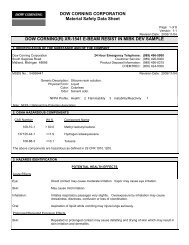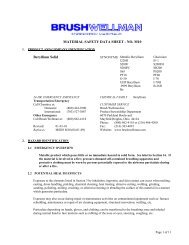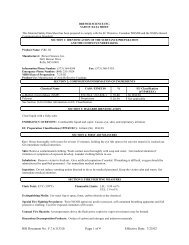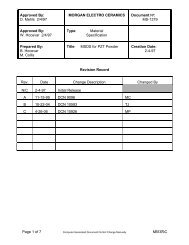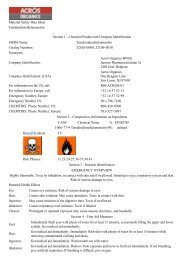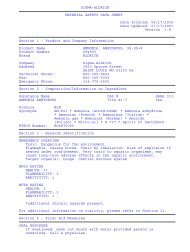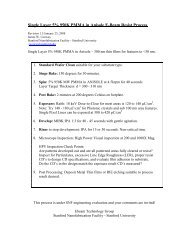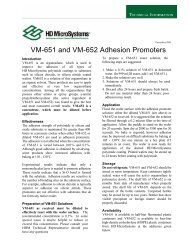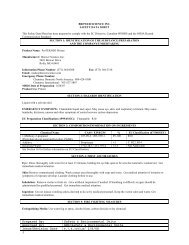EE 410 / Saraswat Handout #3 - Stanford Nanofabrication Facility
EE 410 / Saraswat Handout #3 - Stanford Nanofabrication Facility
EE 410 / Saraswat Handout #3 - Stanford Nanofabrication Facility
Create successful ePaper yourself
Turn your PDF publications into a flip-book with our unique Google optimized e-Paper software.
<strong>EE</strong><strong>410</strong> / <strong>Saraswat</strong> <strong>Handout</strong> <strong>#3</strong><br />
clean, to remove any residual plasticizers or other contaminants which may adhere to wafers<br />
which have been sitting around for a while. Another variation of the standard resist strip process<br />
for metal-containing wafers may include a 10 minute PRX-127 dip between the gasonics clean<br />
and PRX-1000 dip. PRX-127 is another commercially available, alkaline-based stripper which<br />
has added selectivity for removal of the residual side-wall polymer which accumulates during<br />
plasma metal etch. It is absolutely critical that wafers be perfectly dry (especially if sequential<br />
dips are used) since trace moisture yields a highly alkaline solution which will corrode metal.<br />
When to use: For resist removal from "semiclean" substrates.<br />
How to process:<br />
• Process in gasonics, program 013.<br />
• At wbmetal: 10 minutes in PRX-1000 at 40 C.<br />
• Rinse in the quick dump rinse tank for 6 cycles (about 4 minutes)<br />
• Spin rinse/dry in the Semitool spinner (about 5 minutes)<br />
• Visually inspect to ensure complete resist removal<br />
3A. 4. Standard Pre-Diffusion Clean: wbdiff<br />
Purpose: To decontaminate wafers before furnace processing.<br />
Method: The process used at SNF is a modified "RCA" clean, originally developed at RCA in<br />
the 1960's as a way to decontaminate wafers before furnace or deposition steps. The RCA clean<br />
consists of an RC-1 mixture of ammonia, hydrogen peroxide and water; this removes particles<br />
and surface contaminants by simultaneously mildly oxidizing the silicon and dissolving the<br />
resulting oxide to undercut the contaminant. Although very effective, the process margin is<br />
narrow and can easily lead to silicon pitting and plating of metal ions. This is followed by an<br />
RC-2 mixture consisting of hydrochloric acid, hydrogen peroxide, and water, which is effective<br />
at remove trace metals. Instead of the RC-1, at SNF we use a piranha dip (which mildly oxidizes<br />
the silicon surface) followed by an HF dip (which dissolves the resulting oxide), a sequence<br />
which has a broader process window.<br />
When to use: For "clean" before processing in any furnace. Wafers must be processed<br />
through piranha clean at wbnonmetal prior to pre-diffusion cleaning at wbdiff.<br />
How to process:<br />
• At wbdiff, dip for 10 minutes in 4:1 concentrated sulfuric acid: 30% hydrogen peroxide at<br />
90 C.<br />
• Rinse in the quick dump rinse tank for 6 cycles (about 4 minutes)<br />
• Dip for 30 second in 50:1 HF<br />
• Rinse in the quick dump rinse tank for 6 cycles (about 4 minutes)<br />
• Dip for 10 minutes in 5:1:1 water: concentrated hydrochloric acid: 30% hydrogen<br />
peroxide.<br />
• Rinse in the quick dump rinse tank for 6 cycles (about 4 minutes)<br />
Revised Jan. 11, 2008 Page 8/47


